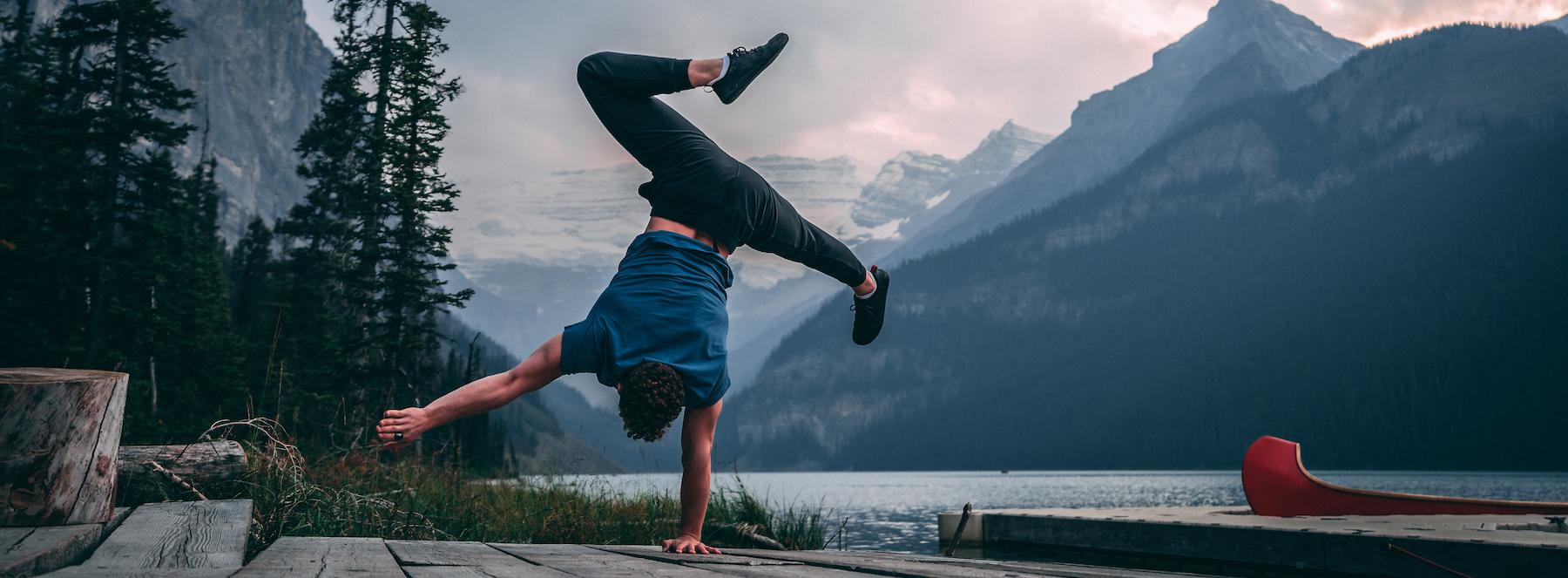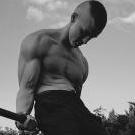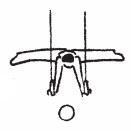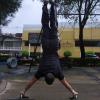Search the Community
Showing results for tags 'strength'.
-
Hi, I just joined this week and had a question about strength in the shoulder... I have none. I have a reoccurring shoulder dislocation that I've been managing for 18 years, plus a desk job... So those 2 things combined I kind of become apathetic about my shoulders. Well enoughs enough... I'm here to reclaim my shoulder strength. So question: Should I do some extracurricular prehad work on my shoulder girdle, or is the program setup to work all those small rotator muscles in the first months/years of the program?
-
Are there suggestions you guys have for upper and lower body strength course medications? I don't have access to stretch bands or that stretch wall apparatus. Any modifications for bodyweight strength training for upper and lower body would be greatly appreciated!
-
For ring swings, what are your opinions on required or adequate strength levels necessary to safely maneuver learning ring swings? Obviously, there are some different levels to this and a lot to consider, but I'm curious what people what other people who have gone through the gymnastics skills and progressions for rings and are familiar with high level ring strength and development think. Ie. What strength is required for each strength level listed below? How many pullups should one be able to do? What kind of weighted pull up and relative strength should you have before you attempt ring swings? How long should your full front and back levers be? Where is your rope climb progression at when one could start? These aren't perfect questions or the end all be all, just giving you all an idea of what I'm trying to get at. Now, I'm sure many of you are going to simply say "When you've mastered all of foundation (past f4), only then can you even attempt rings". I think that's a bit short sided, sure, I would agree that someone who has worked all the way through foundations and the rings programs will definitely be better off, but my point here is more of a hypothetical random thought. Someone doesn't need to spend years going through all of foundation and rings. For instance, I think a person with baseline levels of strength is ok to start doing low level rings swings, like leve 1 (refer to the levels below). That same person could not do high level swings (like ring giants, bails, etc.), but that should be obvious. I realize this might be vague, so let's say for instance you have a 6' 1" male, 25 yrs old, 200 lbs, athletic background, and is getting into gymnastics and wants to learn ring swings. What are appropriate strength levels for him? Lot of variability and factors to something like this, I know answer is always "it depends". Just looking to see what other gymnasts and coaches think and what they'd recommend. level 1: basic swing-body tight, letting the body simply pendulum back and forth to get used to the movement, feet never going past say 30 degrees on each side (front/back swing) from the ring tower uprights. This level wouldn't require much strength at all since your swings at such a low intensity, but I'd want someone with a baseline of pull up/rowing/grip strength. Most people should be able to simply jump up and try these first time though, or just for fun. Level 2: actually starting to learn the rings swing: turning rings out/in, correct body position, maintaining pressure on the rings, etc. Let's say smooth swings with feet/shoulders rising to ring height Level 3: Higher ring swings: high enough to comfortably swing into front and back uprises without arm bend Level 4: Learning swinging skills like dislocates, inlocates, felges, swings to low level strength, etc. Level 5: Being able to consistently accumulate volume on level 4 swings without damage to joints and connective tissue. This is an important distinction: it's one thing to be able to do a smooth dislocate, but that dislocate is still accumulating fatigue and trauma on the connective tissue. No matter how technically sound the swing, the body is still being exposed to several times bodyweight on each swing and this for generally a handful of swings/reps each turn and then taking multiple turns in a session or practice. So, this level can do level 4 swings, but can now comfortable tolerate these swings with volume. Sort of like if you deadlift a 1 RM: yes, you can do it for sets of 1, but doing too much volume is physiologically impossible at this intensity of your max (you can't do 10 reps of your 1 rep max in one set, otherwise it wasn't your true 1 rep max, duh). Level 6: Learning giants/handstand bail swings. This is essentially the highest force the body will encounter WITH SWINGS (for those of you that were gonna mention the amount of torque on the shoulder/elbows in say, a cross, or maltese) and requires much prep over a long time in conjunction with sound swing mechanics and technique. Level 7: able to consistently and safely accumulate volume with level 6 swings without adverse effects (ie. injury, discomfort). Things that affect the strength and prehab required: 1. weight: a heavier/more muscled person will have more force exposed to their body in their swings. This strength will simply take longer to build due to their higher mass. 2. Biological age: all things being equal, an 18 year old will be able to adapt to this stress better than a 60 year old 3. Training age: if someone grew up doing gymnastics, they will have most likely have an easier time adapting than someone who started gymnastics at 25 and is rushing through the skill and strength stages. Most adults don't realize that these kids take years of consistent coaching, training, and skill progression to reach their current level and will try to blow through them all. Makes sense, more time spent doing something, the better they will generally be. You throw enough darts at a board, you're bound to get a bullseye. 4. Injuries: more injuries, more severe injuries will take longer to build/rebuild the necessary strength over time, a highly detrained individual, or some debilitating injuries so severe that they will never be able to do these things, etc. 5. Many other factors of course
-
I started GB one week ago with the Handstand 1 course. For some time prior to that have been doing push ups, pull ups, dips, frog balance, tuck planche and wall assisted handstands. A couple of weeks ago I began recording my pull ups, dips and a few other simple moves with the aim of logging improvements with the ultimate aim of doing a muscle up on the bar, preferably without assistance of momentum. Are there any predictors using the pull up, dip, or other exercise that give an indication if a person is capable of a muscle up? For example 20 explosive pull ups means a muscle up is likely for that person. What I find interesting and helpful is looking at the HS 1 course, I can appreciate how each step in each exercise is a building block for a stable free standing handstand. For me the HS now looks achievable as long as I dutifully do each step in the journey and never sacrifice quality of movement. But though my dips and pull ups are improving in quality and quantity the muscle up seems like a fantasy that I will not achieve with the body I inhabit. The transition from pull up to dip phase in the MU just doesn't seem possible, though it is only a lowly ranked gymnastic exercise, not even a skill as I understand it. I am very willing to be patient as I'm in this for the journey more than the destination, but the MU to me is an appealing aesthetic movement which I would love to one day perform with grace. Any advice from coaches of course I welcome, but if there is anyone out there who has taken the journey as I describe, would love to have your input also. (I did search the forum contents, but didn't find anything, maybe my search was not the best).
-
Hi guys, I've left aside iron cross work for a bit more than a month. All this time, I've been putting a lot of work on One Arm Pull Ups (OAPU) and yesterday, when I tried to do some Iron Cross work, i felt a lot more stable in my shoulders as when i was trying it before. I must say that in this month i also lost 2 kg (by eating less quantity, I was kinda eating more than I needed) and feel a lot lighter. In any case... the only thing that I changed in my training is the introduction of OAPU work. May it be very beneficial for Iron Cross? Kind regards!!
-
Hello. I'm Miłosz from Poland from Street Workout comunity. I have some questions about trainings for full planche. I can do straddle planche, straddle maltese. full maltese but i can't do full planche in perfect form. The second problem is no protraction in planches. How i can improve this? I'm working all the time of sculpa position and i'm focus on perfect form but which exercises are bests for this? How many times i should train for improve my planche and which exercises are bests to increase my holds? It be easier if you watch my some videos on insta: www.instagram.com/majlosw thanks!
- 12 replies
-
I saw athlete Chen Yibing perform iron cross on the Olympics of 2008 and this raised a few questions: 1. Are his elbows bent and pointing DOWN, or are they pointing UP and hyper-extended (bent the wrong way)? 2. Is the correct form to have elbows pointing up or elbows pointing down? 3. Is the false grip he uses allowed for iron cross or is it considered cheating? Will doing iron cross without false grip give you more points and higher scores in the competition? 4. Where does iron cross stand in terms of difficulty rating compared to the other straight arm still rings static positions? For example is it considered harder than planche? In order to make sure we are speaking the same language I've added pictures of the possible positions. The the pictures are elbows down, elbows back, elbows up, in that specific order from top to bottom: EDIT: added athlete's name and event EDIT: added pictures of possible arm positions
- 22 replies
-
Hi, new to the forum so apologies if this has been posted in the wrong place lol. I'm looking for some advice on handstands in the hope that someone may be able to help... I've been practicing freestanding handstands now for around 4 months, every week seeing improvement in both my balance and alignment. One thing I've noticed is that the more my alignment improves and the more I'm able to open my shoulders and stack my body on top of them, the less my hold time is. Blanace doesn't seem to be the culprit, as my arms will start to bend at the elbow and I don't have to strength to hold it any longer. I'm guessing this is because more weight is now on top of my shoulders instead of my back arching and taking the weight. So my question is did anyone else experience less strength the more their alignment improved? And if so, any tips on improving strength and in durance in the handstands. I rarely practice wall handstand hold which I think would benefit me...?
-
Developing Kick back to standard position on rings and not complete iron cross
Artin Albert posted a topic in Strength
Guys, what do you think about the way I executed this movement? I'd like you to spot the mistakes . Because my friend says I'm not using enough momentum and that I'm relying more on strength. Also I'd like to know your opinion about how much work I need to get to the full cross(based on the not complete cross I did at the end) Here's the video: -
Hi guys! Once again a topic on rings I was wondering if some basic leg training in order to increase testosterone would eventually help to gain more strength on the rings. I know that heavy legs drag you down in the levers, planche and maltese work, but would bodyweight exercises for legs be beneficial? I've seen that, for example, Yuri van Gelder (one of the strongest rings gymnasts) has quite defined legs and they dont seem to disadvantage him. Legs trained with weights and low repetitions would make me just heavier, but what kind of impact would have a bodyweight leg workout in my ring performance?? thank you in advance Oscar
-
Hi people, I started rings not so long ago and for motivation I use to check for gymnasts performing strength routines on rings. I don't know what you think about the topic, but I realized that my favourite gymnasts on rings are all from China. The difference between Chinese athletes and the rest is super clear: they seek for perfection in their strength positions and the rest just a strong position disregarding the proper technique. I don't know why not everyone seeks for perfect position, it's sad I just saw a national competition in China and I enjoyed it a lot more than any World Championship or Olympic Games... The questions I have for you are: -What do you think about this topic? -Are perfect positions underrated in a rings routine (or not so highly valued by the judges)? -Do ring athletes seek for perfect positions and/but they don't achieve them OR they don't really seek for perfection? -Having a perfect position means that you are stronger? Thanks in advance and big respect for all of you! Oscar
-
Hi everyone I am working on handstand and I have a problem when kicking up to the wall. I have failed in finding this specific issue in any forum so I am asking here. What happens is that each time I kick up, my head goes forward and presses into the wall, and then my feet go all the way up. I have tried moving away from the wall a little but my head still wants to find the wall for support and its like this unsormountable fear that if I kick up, even with the wall there to catch my legs, I will collapse onto my head. I cant seem to get the hang of the motion without my head or upper shoulders pressing into the wall. I end up kicking up only a little if Im far away from the wall, it feels like I wont be able to support the weight on my arms alone. I can press to headstand, both tripod & hands behind head locked. Is this a strength issue? Shoulders/lats/scapulae? Or just arms? I cant do full pull ups yet, but working on them, almost there, can do 10 cleans with 1 band...then again I know others who can do handstand but cannot pull up. Is it a core strength problem? Shoulder flexibility problem? Or is it purely a psychological fear thing? How can I get over this barrier and stop my head from shifting forward into the wall? One person (a coach, believe it or not) said it was because I was too tall, my legs way too long so my upper body cannot handle it. Im not that tall...Im 5'9/1.76, taller than average for a female maybe but Im not abnormally tall ... Thanks in advance
-
Hi guys, I was just wondering. Im capable of doing full planche on p-bars for about 7 seconds. A proper planche (with full protraction and pelvis rotation not yet; only straddled). I just got started with rings and I got super super addicted. I would like to be able to perform a perfect maltese on floor and rings. I was wondering, if it were possible to perform a full protracted maltese just by advancing in your maltese lean. I mean, if by going each time more and more forward it would arrive to the point in which i would be strong enough to lift my feet of the ground. Of course, next to it I'm doing some dumbell and maximal strength, but my training is mainly focused on leans, leans leans and more leans (for maltese). What do you guys think? Thanks in advance Oscar
-
Hi all, I am intending to start doing gymnastics in the near future, ideally towards the end of this year. I have recently begun doing calisthenics and trampolining (emphasis on the word "recent"; I have actually only attended trampoling once), and wonder if you think this combination will enable me to develop the necessary muscular strength and flexibility to start gymnastics with a lower risk of injury and a faster rate of advancement. My intention for doing gymnastics is to develop muscular size, strength, flexibility, endurance, and maximise overall physical health. I have a weight target and some strength targets. I currently weigh about 10 stone 11 pounds, and am an 18 year old male of perhaps 6 feet in height, with fairly big bones (wrists, elbows, knees etc.); aside from the bone weight, most of this weight is lean muscle. Evaluation of this body: my calves are strong, but my thighs are relatively weak (something I imagine will need to be altered for gymnastics performance); my upper body is relatively weak (I cannot perform a single unassisted pullup yet, though I am close; I cannot perform a planche, though I am able to balance all of my weight upon my hands with them placed on the floor behind my back; I can perform bodyweight dips, also). My ideal weight target is 13 stone; or else, 12 stone - whichever weight is the best for the balance of qualities described (I myself am not concerned with aesthetics, though since I am sure my future partner is, it is of course relevant! If you have even seen "American Psycho" with Christian Bale, or Brad Pitt in "Fight Club", this is the sort of size range I would be aiming for...). That sums up the weight targets; as for strength targets, I would like to be able to perform unassisted flips (e.g. backflips), handstand pushups, one legged jumps (leaping to a significant height) etc. Any advice you can offer to me, whether general, or specifically aimed at the targets I have expressed, would be appreciated. Thanks, Chanti.
-

A beginners guide to gymnastics and strength training
Samuel Inauen posted a topic in Getting Started
Hello guys, I'm new to this forum as well as to gymnastics. I'm 19 years old and have done strength training for the last couple years. I want to learn some basic skills in gymnastics like Handstand(-Pushups), L-Sits, Muscle-Ups, Splits..., but I simultaneously want to work on my strength with barbell exercises, maybe some olympic lifts. Are there any programs you can recommend? I don't want to buy a program I didn't hear any opinoins in the first place. Thank you, Samuel- 13 replies
-
Hey guys, I'm in school for massage therapy, and with all of the study has brought a huge detriment to my posture. Anyone have any good exercises they'd recommend for anterior head carriage? Thanks, and happy gymnasticing (gymnasticizing? gymansting? gymming?) Keith
-
Hi! So I don't have an option to train with a spotter, this is why I got myself a new toy - Dream Machine (50/50) Can anyone tell me how you should use it to get the best out of your training, how do the gymnasts use it? How often do gymnasts use it? For what skill works the best? What is the best way to increase intensity on skills like planche, lever, etc (maybe vest, or ankle weigths?) Any information is welcome! Thanks!
- 11 replies
-
- Strength
- Dream Machine
-
(and 2 more)
Tagged with:
-
I realised that many people think that they're too tall for gymnastics and that they can't achieve anything great once they're past 5'7" or something. I find that to be something that can be very discouraging and I know that we all need some motivation at times (as a taller guy myself). Having said that, it's still more important to focus on the journey and doing your best. I want to make this post so that taller people can have a reference to what's achievable even when you're tall (for gymnastics) and gain some motivation. Will you end up in the Olympic team? No. Can you achieve really high levels of strength? Absolutely, especially when following the type of quality resources that GymnasticBodies offers. Alexander Shatilov - 183cm (6') - Olympic Gymnast - Inverted Cross Kristian Thomas - 180cm (5'11") - Olympic Gymnast - Maltese Lachlan Walker - 185cm (6'1") - Level 7 Gymnast - Iron Cross Roye Goldschmidt - 190cm (6'3") Ivan Kajtaz - 180cm (5'11") - Calisthenics and Street Workout Athlete - Floor Maltese and Japanese Handstand Chris Heria - 183cm (6') - Calisthenics and Street Workout Athlete - Full Planche
- 9 replies
-
- 5
-

-
- motivation
- height
-
(and 6 more)
Tagged with:
-
I'm excited to start GB. I am not a beginner but I will respect the wisdom of coach Sommer and start with Fundamentals. I have achieved some of the aspects of F1 on my own when I was leaner and stronger. I'd like to do Fundamentals and concurrently drop some fat and gain some strength. I don't need to go for hypertrophy but I would like to lift some weights and ride my bike to boost my fitness, increase my strength and burn fat. Is this a mistake? I wouldn't be lifting to failure or doing high reps. Just some moderate training to boost my metabolism and hopefully prepare me for F1 and get me back to where I was. Insights are appreciated. Thanks.
-
- fundamentals
- strength
-
(and 3 more)
Tagged with:
-
Hi there, There some exercises that I co complete the time/reps needed for strength though I cannot get to the ROM that is requiered in mobility. Can I progress and put next mobility exercise plus the one before on my session? Is that recommended?
-
Hey GB, So I've been working on pistols aka single leg squats. I went thru a bunch of progressions, and made some great progress vis a vis balance and overall leg strength. However, my dominant leg (left) remains to be stronger and i have better balance on it. I've been doing sets of 5x5 on both legs, but sometimes, i only do 3x5 on the left to let the other side catch up. I also do pistols with a kettle-bells sometimes (which aside from counterbalancing) tacks on some extra LBs, making solely bodyweight "feel" easier. Has anybody had this issue - one leg being stronger and better balanced than the other? If so, did you back off volume on one leg, add weight to the other, a mix of both? Or just stayed the course and the "weaker" leg eventually caught up? Please let me know. Thanks!
- 7 replies
-
- single leg strength
- pistols
-
(and 3 more)
Tagged with:
-
I came across www.gymnasticbodies.com/proper-way-v-ups/ and this video www.youtube.com/watch?v=1RwgqYQpWp8 from 6:10 s (appx) onwards. The article says to go slow and controlled, but in the video by Durante, he goes really fast. ( ). So what do I follow exactly? And what am I missing here? Also, www.gymnasticbodies.com/first-things-first-mastering-hollow-body-position/ How far should I lift my upper back with my lower back pressed in? I can press in my lower back with my upper back on the ground, so, should I be lifting it up till I feel only my lower back touching (or) till just my lower back and bones (I think scapula, not sure) on the back keep touching (or) else I don't know how to do it.
-
I have been training in calisthenics and lifting weights for a while. I can do muscle ups and hold tuck planche for a minute. I recently purchased some rings and want to get into them. I can barely hold support position for 5 seconds. So with that being said Is there a good, intense, simple workout I can do for raw strength with the rings, to get better at them? How should I get more time in support position, just do it a lot? Would training planche on the rings help me on the ground/parallettes? How should I go about conditioning my tendons for future iron cross and maltese work? (Long term goals, if not lifetime) I'm sure you see tons of these topics daily, so forgive me. I hope to become a well known user in this community, we all start somewhere. Thank you
-
Ok im still fairly new to this calisthenics/gymnastics lifestyle and I want to make sure I don't mess myself up so it anyone could assist me I would really appreciate it I broke my 2 left arm bones (ulna&radius) twice right in the middle of the arm when I was in middle school (Im 23 now) second time the bone came out and had minor surgery but no plates or screws though, but now im training for a planche but I feel my left arm is slight weaker especially around the back elbow right under the triceps muscle but right above the actual elbow joint I don't know it that's a muscle or tendon sorry, but when I try some poses like crow stand I feel that left elbow area barely has muscle but I feel a nice tight muscle or tendon on my right elbow (I feel it with my knees when I get in that stance) but when I do straight arm planche holds with my feet elevated on something I don't feel stress or feel like it's gunna snap but I guess i am afraid or siking myself out in my mind that my elbow is gonna snap backwards since I feel there's not to much strength there, I never feel pain or any of that sort from the crow stance as well and I don't want to In the future either. Im just thinking since I broke it twice and like a month apart from each other im afraid the muscles got reattach differently? If that's even possible So I guess my question is, will I be able to ever do a straight locked out arm planche or is that out the window due to my old injury? If not what exercise could I do to strengthen that one area/muscle? and also both elbows pop when I extend them out must of the time but never pain, is this normal?







